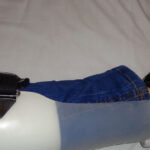If you’re a runner, then you know the importance of having a good pair of shoes. But even the best shoes can start to wear down after a while. One way to extend the life of your shoes is to waterproof them.
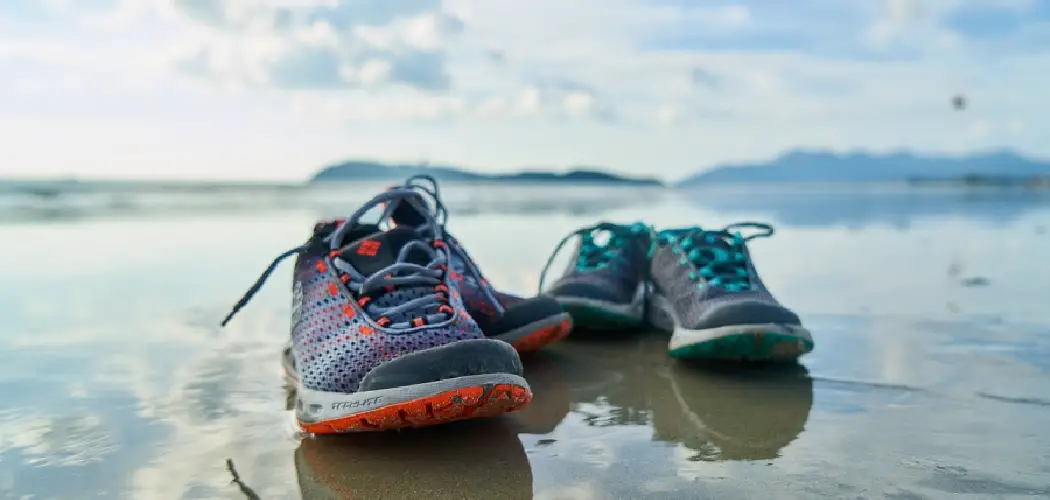
Waterproofing your running shoes will help keep them in good condition for longer, and it can also make them more comfortable to run in, especially if you live in a rainy climate. Here’s how to waterproof running shoes so that they stay in great shape for as long as possible.
Things You’ll Need
- The right pair of shoes
- A waterproofing treatment
- Gaiters
- Comfortable socks
- Newspaper or another padding (for storage)
7 Steps to Follow on How to Waterproof Running Shoes
Step 1: Choose the Right Running Shoes
The first step to waterproofing your running shoes is to make sure you choose the right pair of shoes, to begin with. There are a few things to look for when selecting running shoes, including:
- Breathability: Look for shoes with mesh panels or other features that allow your feet to breathe.
- Waterproofing: Some shoes are already waterproof, so be sure to check the label before purchasing.
- Support: Make sure the shoes you select provide adequate support for your feet and ankles.
Step 2: Apply a Waterproofing Treatment
Once you have the right pair of shoes, the next step is to apply a waterproofing treatment. There are a variety of treatments available, but one of the most popular is a spray-on treatment. Simply spray the treatment onto your shoes and let them dry completely before wearing them.
Step 3: Use Gaiters
Gaiters are an essential piece of gear for any runner, but they are especially important if you are trying to keep your feet dry. Gaiters attach to your shoes and extend up your leg, creating a barrier between your skin and the elements. When selecting gaiters, be sure to choose a pair made from waterproof material that fits snugly around your calf.
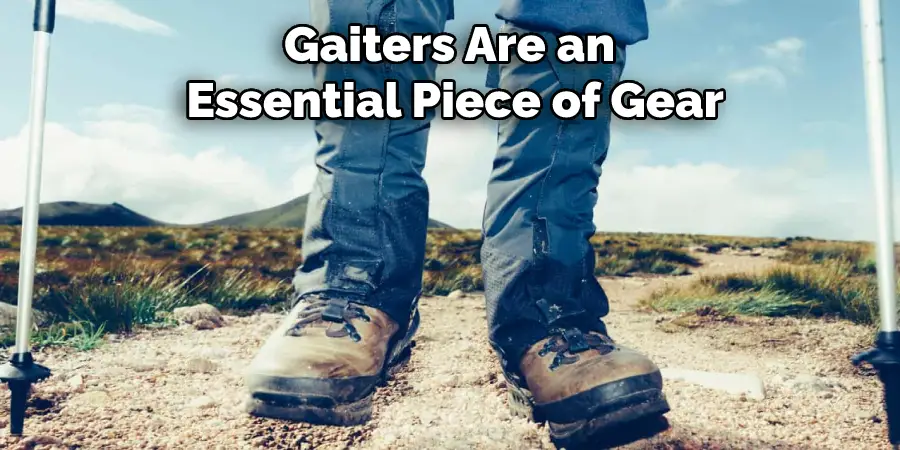
Step 4: Wear Socks That Fit Properly
Another important step in waterproofing your running shoes is to make sure you wear socks that fit properly. Ill-fitting socks can cause blisters and other problems, so be sure to select comfortable socks that do not slip or bunch up inside your shoe. Additionally, consider wearing two pairs of socks – a thin inner layer and a thicker outer layer – to protect against moisture.
Step 5: Inspect Your Shoes Regularly
Even if you take all the necessary steps to waterproof your running shoes, inspecting them regularly for signs of wear and tear is still important. If you notice any cracks or holes in the waterproofing treatment, reapply the treatment as soon as possible. Additionally, be sure to clean your shoes after each run to remove any dirt or debris that could potentially damage the waterproofing treatment over time.
Step 6: Store Your Shoes Properly
When you’re not using your running shoes, it’s important to store them properly to prolong their lifespan. Avoid storing your shoes in direct sunlight or in humid environments, as both can cause damage to the materials used to construct your shoes. Additionally, be sure to stuff your shoes with newspaper or another type of padding when not in use to help maintain their shape.
Step 7: Replace Your Shoes Regularly
Even if you take good care of your running shoes, they will eventually need to be replaced. Most experts recommend replacing running shoes every 300-500 miles, but this number will vary depending on factors such as your weight and running style. Pay attention to the condition of your shoes and replace them when they start to show signs of wear and tear.
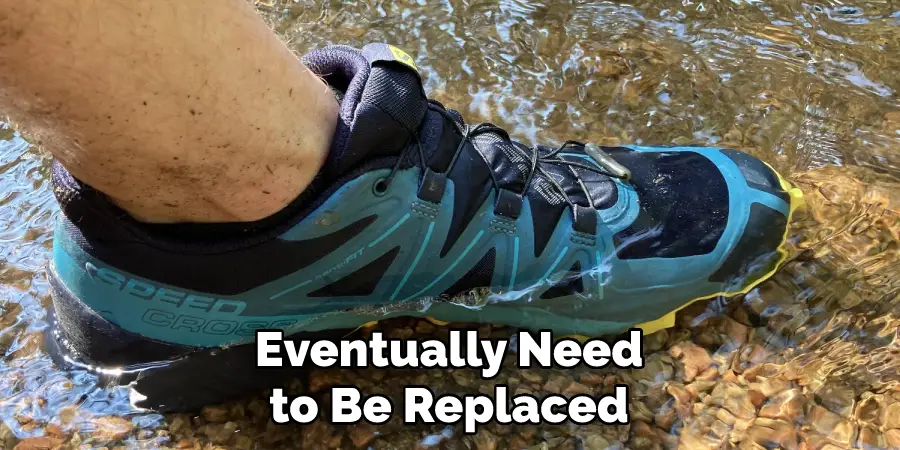
That’s it! You’ve now learned how to waterproof running shoes. Following these simple steps, you can keep your feet dry and comfortable on even the wettest days.
How to Tell if Your Running Shoes Are Waterproof or Not?
Have you ever wondered how to tell if your running shoes are waterproof or not? If you’re like most people, you probably don’t even think about it until you’re out on a run and your feet start to feel wet. So here are a few things to look for when trying to determine if your shoes are waterproof:
The first thing to check is the material of the shoe. The shoe is likely waterproof if it’s made of leather or synthetic leather. Another way to tell if a shoe is waterproof is to check the seams.
If the seams are taped or sealable, that’s another indication that the shoe is designed to keep water out. Finally, take a look at the sole of the shoe. A waterproof layer between the insole and outsole is a good sign that the shoe will hold up in wet conditions.
Of course, the best way to know for sure is to put the shoes to the test. Splash some water on them and see if they keep your feet dry. With these tips in mind, you’ll be able to choose the right shoes for any activity – rain or shine!
What to Do if Your Running Shoes Start Leaking?
It’s happened to the best of us: you’re out on the run, and you notice that your shoes are starting to feel slightly damp. And then you look down, and sure enough, there’s a small stream of water leaking out of one of your shoes. Obviously, this is not ideal. But don’t despair—you can do a few things to fix the problem.
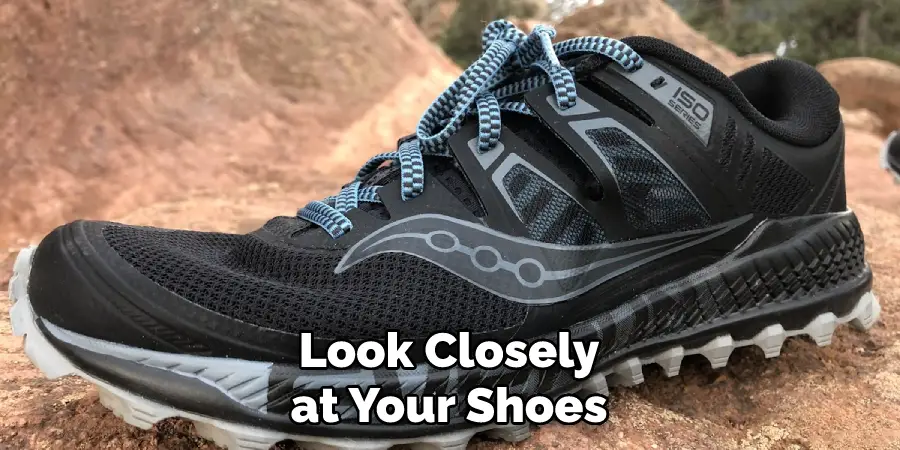
First, look closely at your shoes to see where the leak is coming from. If it’s just a small hole or cracks in the sole, you might be able to patch it up with some duct tape or super glue. However, if the leak comes from the shoe’s sides or upper part, you’ll probably need to replace the shoe entirely.
Once you’ve located the source of the leak, it’s time to take action. If it’s a small hole, apply some duct tape or super glue to seal it up. You’ll need to replace the shoe if it’s a bigger hole or crack. Unfortunately, there’s no easy way to do this—you’ll just have to buy a new pair of running shoes. But on the bright side, now you have an excuse to go shopping!
How to Prevent Your Running Shoes from Getting Wet in The First Place?
Nobody likes getting their shoes wet, especially when they’re running shoes. There’s nothing worse than facing the rest of your run with soggy, squishy shoes. But what can you do to prevent your shoes from getting wet in the first place? Here are a few tips:
First, make sure to choose the right shoe for the conditions. For example, if you know you’re going to be running in wet weather, don’t wear your white sneakers – choose a dark-colored shoe made of waterproof material.
Second, invest in a quality pair of socks. Socks are often the first line of defense against wet shoes, so choosing a pair that will repel water and keep your feet dry is important.
Finally, if you can’t avoid running in wet conditions, try to protect your shoes as much as possible. For example, if there are puddles on your route, try to run around them instead of through them. And if you do get your shoes wet, take them off as soon as possible and stuff them with newspaper to help soak up the water.
By following these tips, you can help keep your running shoes dry – and your feet happy!
Tips for Taking Care of Waterproofed Running Shoes
Runners know that a good pair of shoes is essential to a successful run. But what happens when your shoes get wet? If you have waterproofed your shoes, you will need to take special care of them to ensure they continue performing at their best. Here are a few tips for taking care of waterproofed running shoes:
- Remove the shoes immediately after a run and allow them to air dry.
- Do not put the shoes in the washing machine or dryer.
- Apply a waterproofing treatment regularly to help maintain the water-repellency of the fabric.
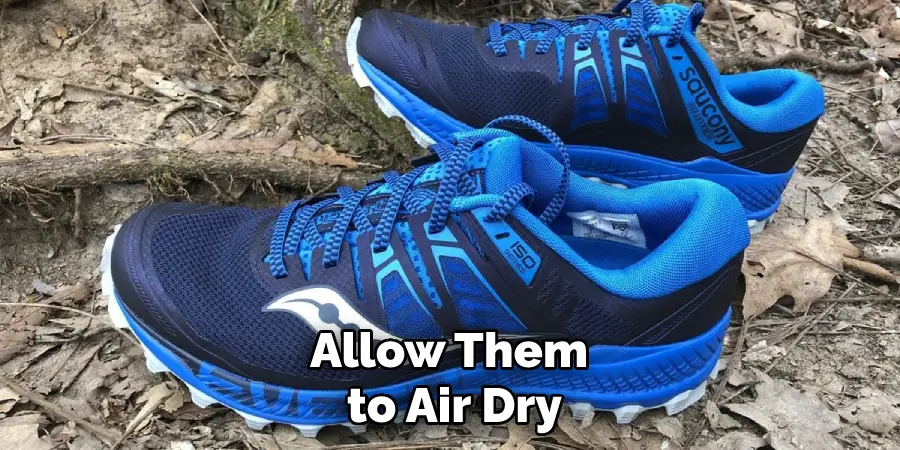
By following these simple tips, you can extend the life of your waterproofed running shoes and ensure that they continue to keep your feet dry on even the wettest days.
Frequently Asked Question
What Is the Best Waterproofing Spray for Shoes?
There is no definitive answer to this question. Some popular waterproofing sprays for shoes include Nikwax TX-Direct, Grangers Xtreme, and Obenauf’s LP. It is important to read the instructions carefully for each product to ensure you are using it correctly.
Generally, you will want to spray the waterproofing solution on a non-absorbent cloth and then apply it to your shoes. Be sure to allow your shoes to dry thoroughly before wearing them again.
Can I Just Put Some Rubber Sealant on My Running Shoes to Make Them Waterproof?
The short answer is no. While you could theoretically use a waterproof sealant to make your running shoes more water-resistant, it’s not recommended. Doing so can actually damage the shoes and reduce their lifespan. Instead, you should consider purchasing a pair of rain boots or water-resistant shoes specifically designed for running in wet conditions.
You Can Check It Out Assemble Peloton Shoes
Conclusion
Waterproofing your running shoes is a great way to protect them from water damage and extend their lifespan. There are a few different ways to waterproof your shoes, but we recommend using a spray or cream-based product for the best results.
Be sure to follow the instructions on the label carefully, and allow the shoes to dry completely before wearing them again. Thanks for reading our post about how to waterproof running shoes.





